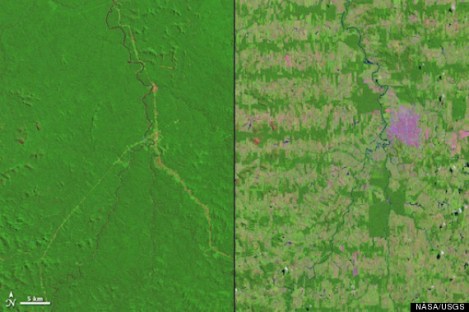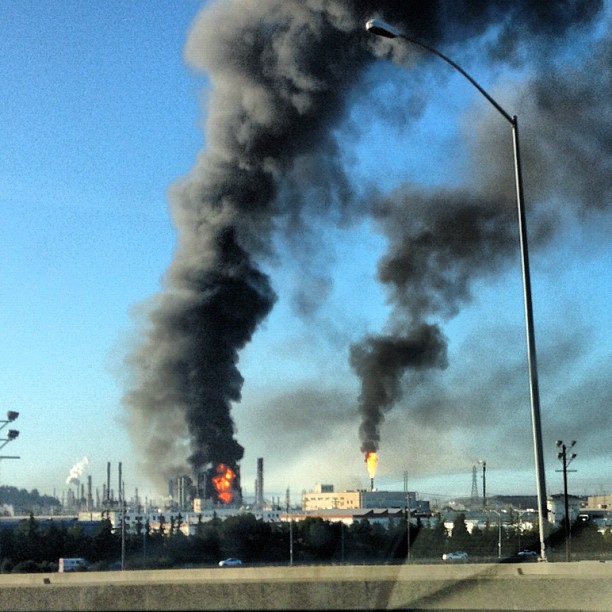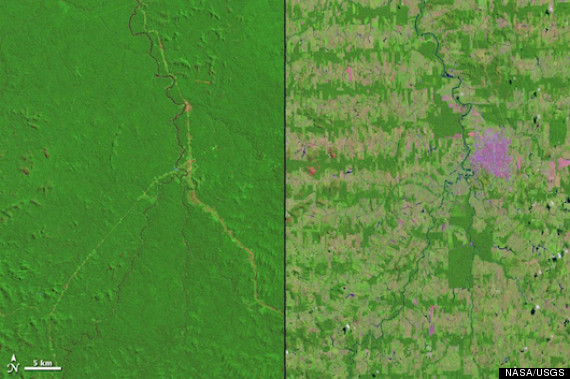
NASA satellites might capture some amazing images of the Earth’s surface, but they capture some incredibly depressing shots, too. On the left, above, is the Amazon rainforest as it existed in 1975 in Rondonia, a region in western Brazil. On the right is that same stretch of rainforest in 2012.
As MNN points out, it’s encouraging that deforestation has slowed, but huge damage has already been done:
The rate of Amazon deforestation is now much slower than it used to be, having fallen nearly 80 percent since its most recent peak in 2004 … Yet roughly 224,000 square miles of the rain forest have still been lost since 1980, including more than 1,000 square miles per year in Rondônia from 1980 to 1992. And according to research by NASA biologist Compton Tucker and Michigan State forestry expert David Skole, deforestation speed isn’t necessarily the most important stat to measure.
Biodiversity is also important for rainforest health, and fragmented habitats like the one on the right make it harder for species to survive. Not to mention the fact that alien species will never land here, now that they can see from a distance what a hash we’ve made of everything.



